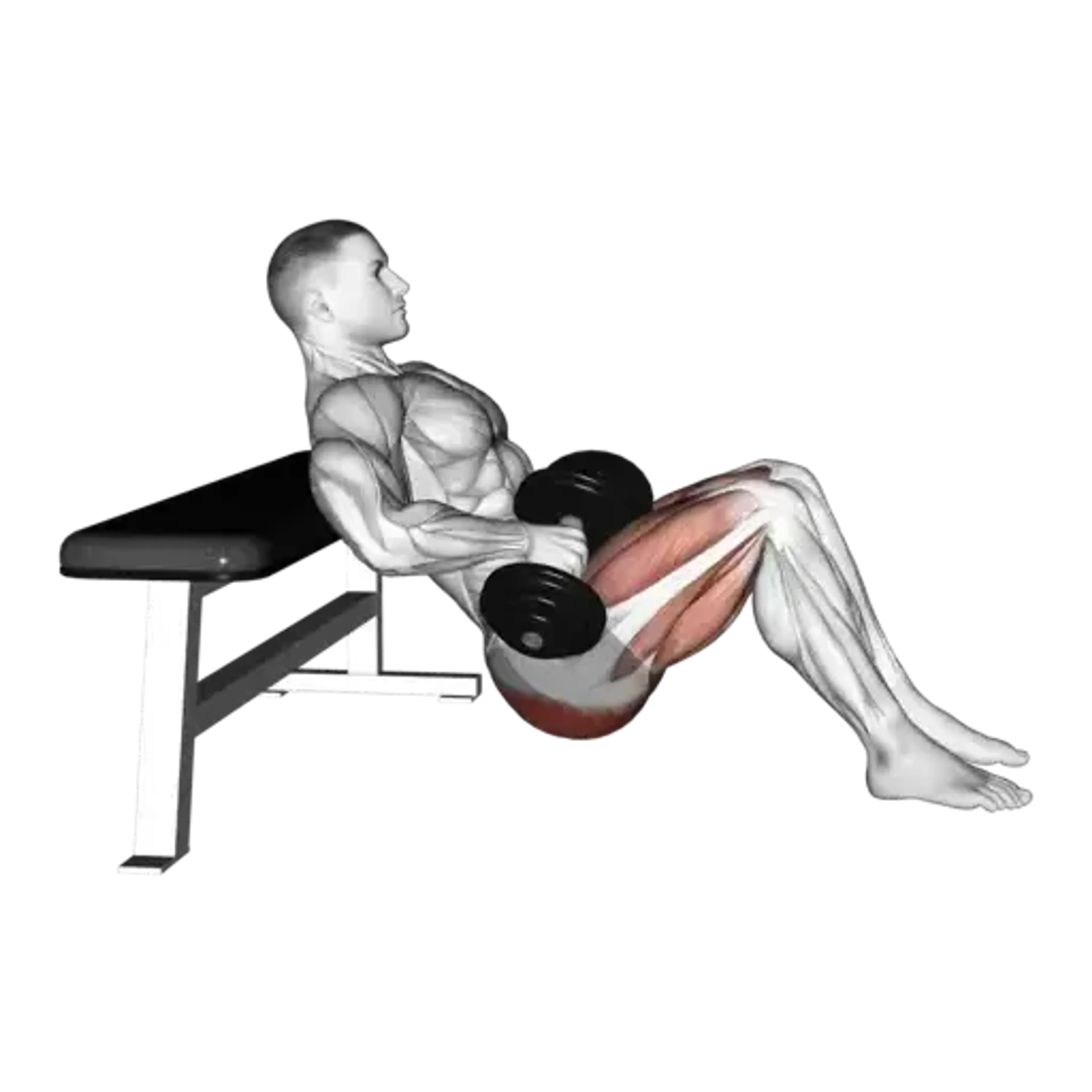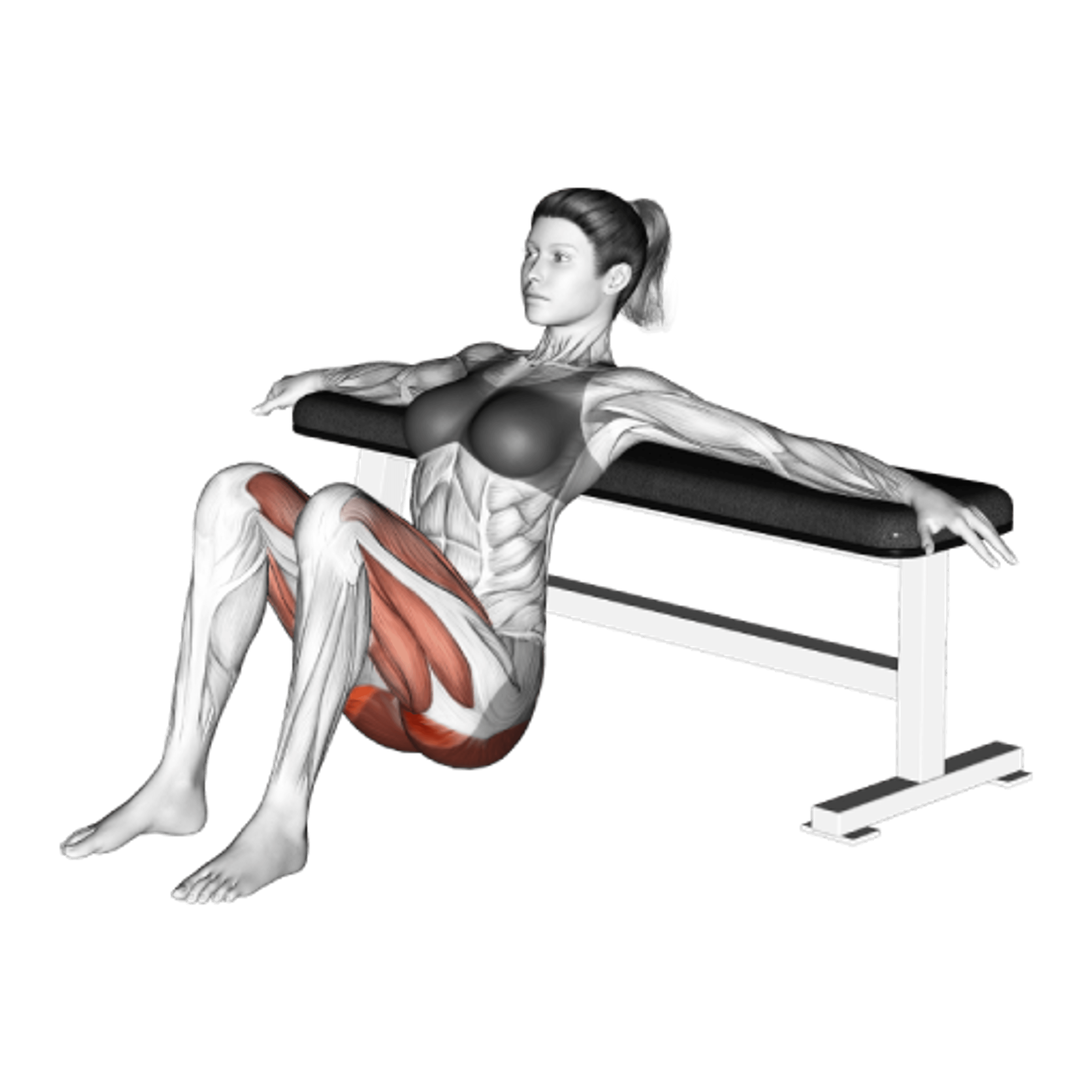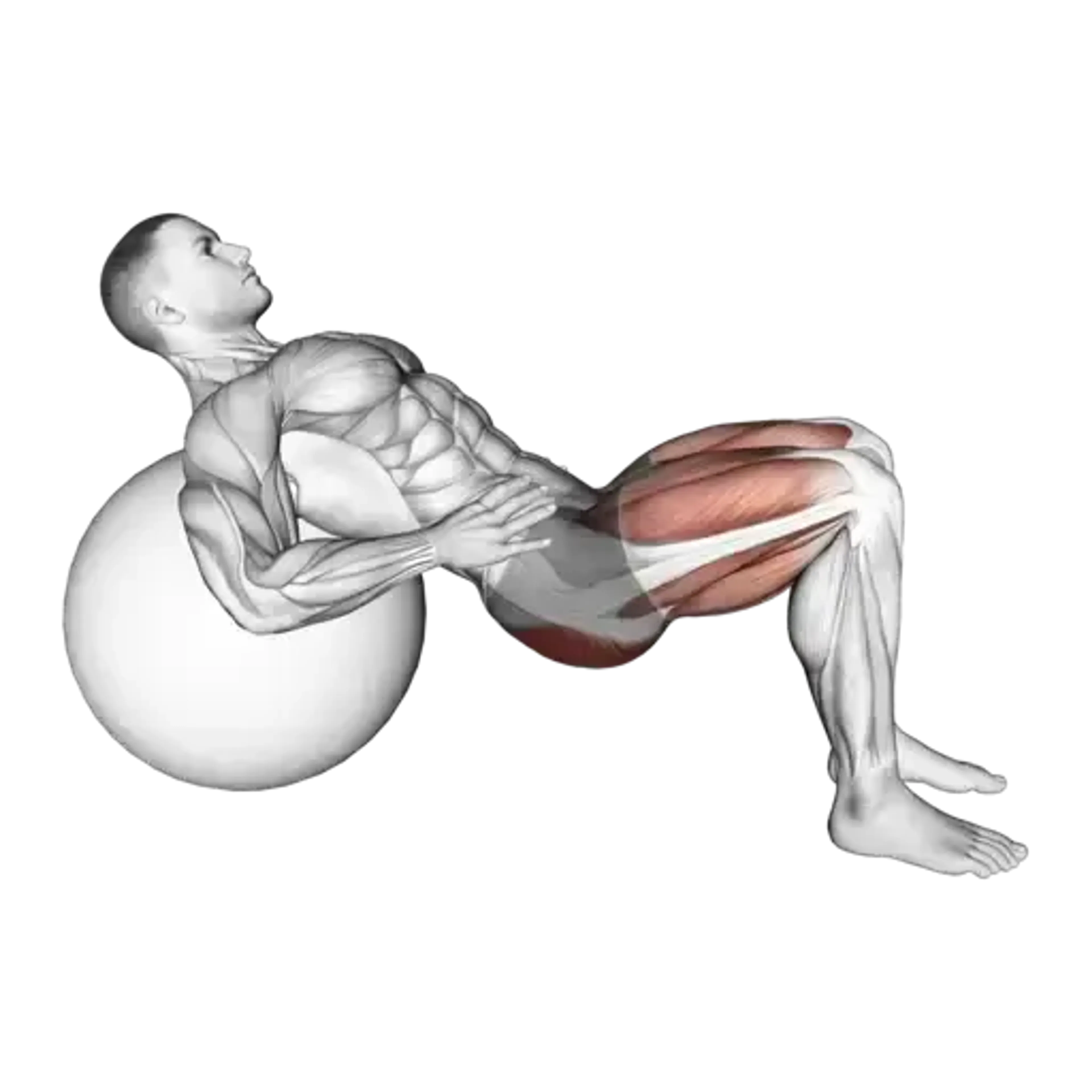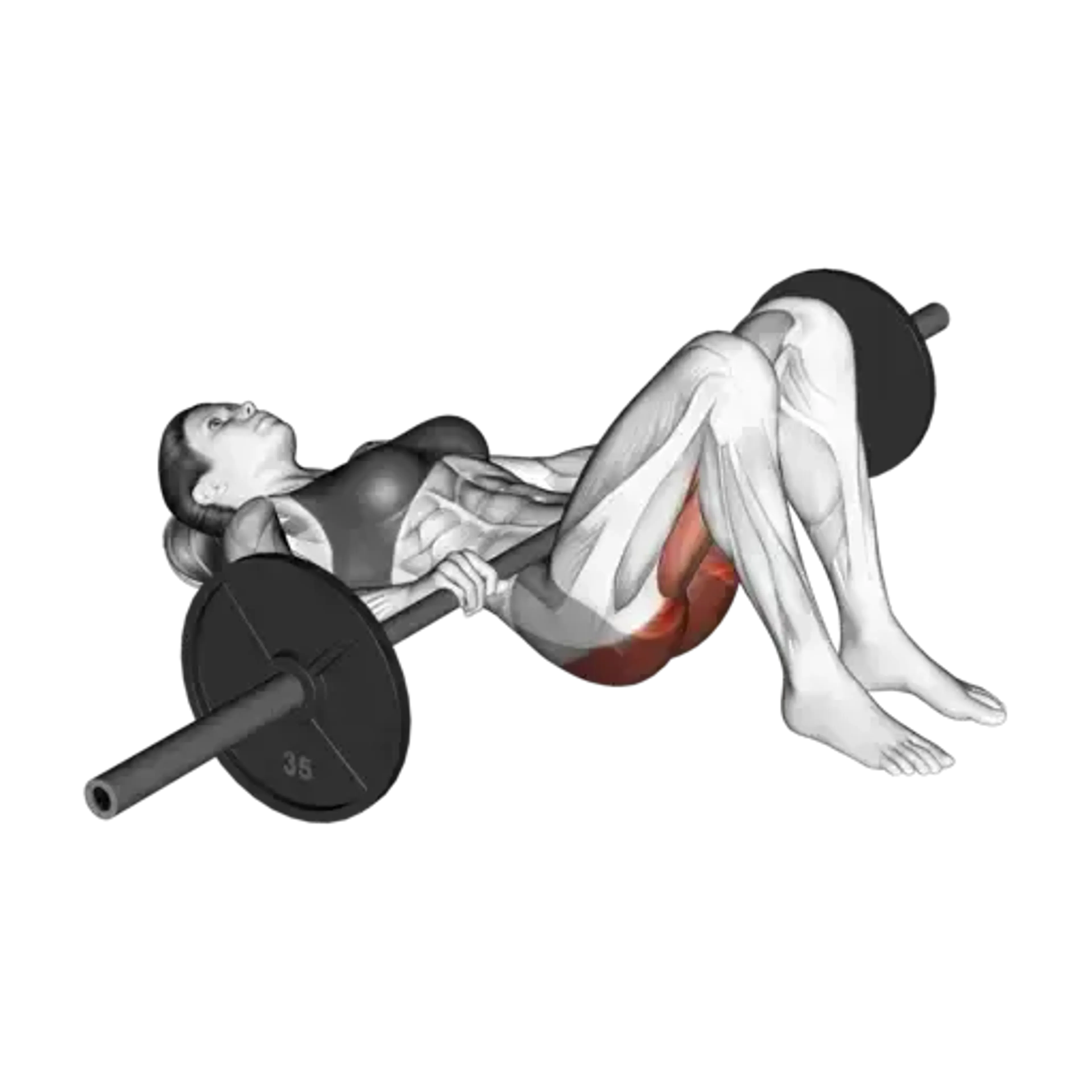Band Hip Thrust

Overview
- Primary Focus:
- Glutes.
- Equipment:
- Resistance bands.
- Difficulty:
- Beginner.
General Information
Band Hip Thrust is a compound exercise that primarily targets the glutes, while also engaging the hamstrings and quadriceps. It is a beginner-level movement that provides accommodating resistance and is easy to set up in small spaces.
The band’s tension increases toward the top, encouraging a strong lockout and focused glute contraction. It’s ideal for home training, warm-ups, or higher-rep hypertrophy work without heavy external loading.
Vary band thickness to adjust difficulty, and use longer pauses at the top for more time under tension. Single-leg and tempo variations can challenge stability and control when loads are limited.
Expect a strong squeeze at peak hip extension with minimal lower back stress when the ribs stay down and the pelvis stays neutral. The movement teaches clean hip extension mechanics transferable to other hinges.
Muscles Worked
- Gluteus Maximus
- Primary
- Gluteus Medius
- High
- Gluteus Minimus
- High
- Biceps Femoris
- Medium
- Semitendinosus
- Low
- Erector Spinae
- Minimal
- Rectus Femoris
- Minimal
Instructions
- Anchor a resistance band low and loop it around your hips; face away from the anchor with the band traveling between your legs.
- Set your upper back on a stable surface or stay on the floor; plant feet about shoulder-width with shins near vertical at the top position.
- Tilt the pelvis slightly posteriorly, keep ribs down, and brace lightly before driving the hips upward against band tension.
- Squeeze glutes hard at the top without hyperextending the lower back; pause for 1–2 seconds to solidify position.
- Lower with control until hips are just below the torso line; keep knees tracking over mid-foot throughout the motion.
- Reset brace and repeat, keeping the band centered over the hips and the neck in a neutral position.
Common Mistakes
Injuries
Band Hip Thrust is a low risk exercise when performed with proper technique.
The most common issues are lumbar overextension and band placement irritation. Keep ribs down, tuck the pelvis slightly, and place the band across the crease of the hips, not the abdomen.
If the back feels strained, shorten range slightly or slow the top pause. Progress with thicker bands or longer isometrics; regress by moving closer to the anchor to reduce tension.
Stop if you feel sharp hip pinching or radiating back pain; adjust foot position and bracing before adding more tension.
Alternative Exercises

Frequently Asked Questions
- Q: How do I make this harder without heavier bands?
Use longer top pauses, slower eccentrics, or move farther from the anchor to increase tension across the range.
- Q: Where should my feet be?
Place feet so shins are near vertical at the top. If you feel hamstrings cramp, move feet slightly closer to you.
- Q: Can this replace a barbell hip thrust?
It’s a solid option for home training and high-rep glute work, though absolute loading is limited compared to a barbell variation.
- Q: Why do my hamstrings cramp?
Foot position or excessive posterior pelvic tilt can shift tension. Adjust stance and keep the motion driven by hip extension, not knee flexion.
Overview
- Primary Focus:
- Glutes.
- Equipment:
- Resistance bands.
- Difficulty:
- Beginner.




